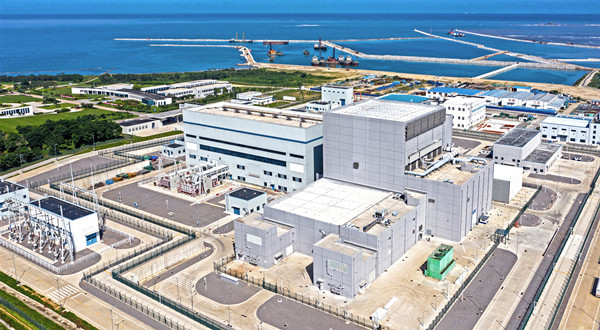The Huaneng Shidaowan high temperature gas-cooled reactor (HTGR) nuclear power plant, the world's first fourth-generation nuclear power plant, went into commercial operation on Dec 6.
It is of great significance in supporting China's high-level scientific and technological self-reliance and building the country into an energy power.
Jointly developed by China Huaneng Group Co., Ltd. (China Huaneng), Tsinghua University and China National Nuclear Corporation, the project is located in Rongcheng, East China's Shandong Province and started construction in 2012.
During construction, China Huaneng gave full play to its resources along the industrial chain and carried out key technology research and core equipment development together with its partners, producing more than 2,200 world's first equipment advances with 93.4 percent domestically-made.
Six key technologies related to large-volume dual-modular reactor circuit strength sealing and warming, low-power-density characteristics of the reactor's intrinsic safety performance validation, continuous loading and unloading of reactors and multi-point linkage control, double-reactor one-unit joint-mixing and start-stop reactor operation, W power platform operation mode and ALARA dynamic control were developed by China Huaneng and Tsinghua University, which laid a solid foundation for future stable operation of the unit and further research and development.
It's worth noting that a group of talents with expertise in construction, maintenance and operation of the HTGR were cultivated during development of the project.
A set of standardized management systems that can be replicated and promoted was also formed and independent intellectual property rights centering on patents, technical standards and software copyrights were established.
The HTGR is an advanced type of fourth-generation nuclear power technology and a key development direction of nuclear power that is internationally recognized. The reactor can maintain a safe state and avoid a meltdown or leak of radioactive materials without any measure.
The safety, high power generation efficiency and wide range of applications of HTGR make them a preference in future nuclear power generation, as they combine heat and power generation and a high-temperature process.
HTGR is expected to optimize energy structure, ensure safe energy supply and promote realization of China's "dual-carbon" goals of peaking carbon dioxide before 2030 and reaching carbon neutrality before 2060.

A view of the Huaneng Shidaowan high temperature gas-cooled reactor (HTGR) nuclear power plant in Rongcheng, East China's Shandong Province [Photo/sasac.gov.cn]
(Executive editor: Xie Yunxiao)